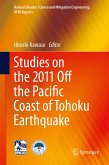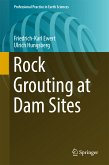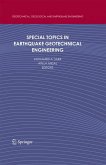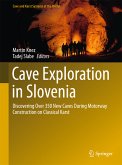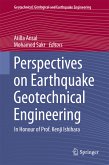Earthquake Engineering and Structural Dynamics in Memory of Ragnar Sigbjörnsson (eBook, PDF)
Selected Topics
Redaktion: Rupakhety, Rajesh; Ólafsson, Símon
72,95 €
72,95 €
inkl. MwSt.
Sofort per Download lieferbar

36 °P sammeln
72,95 €
Als Download kaufen

72,95 €
inkl. MwSt.
Sofort per Download lieferbar

36 °P sammeln
Jetzt verschenken
Alle Infos zum eBook verschenken
72,95 €
inkl. MwSt.
Sofort per Download lieferbar
Alle Infos zum eBook verschenken

36 °P sammeln
Earthquake Engineering and Structural Dynamics in Memory of Ragnar Sigbjörnsson (eBook, PDF)
Selected Topics
Redaktion: Rupakhety, Rajesh; Ólafsson, Símon
- Format: PDF
- Merkliste
- Auf die Merkliste
- Bewerten Bewerten
- Teilen
- Produkt teilen
- Produkterinnerung
- Produkterinnerung

Bitte loggen Sie sich zunächst in Ihr Kundenkonto ein oder registrieren Sie sich bei
bücher.de, um das eBook-Abo tolino select nutzen zu können.
Hier können Sie sich einloggen
Hier können Sie sich einloggen
Sie sind bereits eingeloggt. Klicken Sie auf 2. tolino select Abo, um fortzufahren.

Bitte loggen Sie sich zunächst in Ihr Kundenkonto ein oder registrieren Sie sich bei bücher.de, um das eBook-Abo tolino select nutzen zu können.
Presents a unique fusion of structural dynamics principles related to both wind and earthquake engineering Covers a wide range of practical problems of interest to structural engineers Offers chapters contributed by the leading experts in the field with years of experience Includes a good overview of future directions in earthquake engineering and engineering seismology Presents recent research results from strong motion modelling and dynamics of advanced structures
- Geräte: PC
- ohne Kopierschutz
- eBook Hilfe
- Größe: 32.46MB
Andere Kunden interessierten sich auch für
![Eurocode-Compliant Seismic Analysis and Design of R/C Buildings (eBook, PDF) Eurocode-Compliant Seismic Analysis and Design of R/C Buildings (eBook, PDF)]() Ioannis AvramidisEurocode-Compliant Seismic Analysis and Design of R/C Buildings (eBook, PDF)72,95 €
Ioannis AvramidisEurocode-Compliant Seismic Analysis and Design of R/C Buildings (eBook, PDF)72,95 €![Studies on the 2011 Off the Pacific Coast of Tohoku Earthquake (eBook, PDF) Studies on the 2011 Off the Pacific Coast of Tohoku Earthquake (eBook, PDF)]() Studies on the 2011 Off the Pacific Coast of Tohoku Earthquake (eBook, PDF)72,95 €
Studies on the 2011 Off the Pacific Coast of Tohoku Earthquake (eBook, PDF)72,95 €![Rock Grouting at Dam Sites (eBook, PDF) Rock Grouting at Dam Sites (eBook, PDF)]() Friedrich-Karl EwertRock Grouting at Dam Sites (eBook, PDF)72,95 €
Friedrich-Karl EwertRock Grouting at Dam Sites (eBook, PDF)72,95 €![Special Topics in Earthquake Geotechnical Engineering (eBook, PDF) Special Topics in Earthquake Geotechnical Engineering (eBook, PDF)]() Special Topics in Earthquake Geotechnical Engineering (eBook, PDF)112,95 €
Special Topics in Earthquake Geotechnical Engineering (eBook, PDF)112,95 €![Seismic Design Methods for Steel Building Structures (eBook, PDF) Seismic Design Methods for Steel Building Structures (eBook, PDF)]() George A. PapagiannopoulosSeismic Design Methods for Steel Building Structures (eBook, PDF)104,95 €
George A. PapagiannopoulosSeismic Design Methods for Steel Building Structures (eBook, PDF)104,95 €![Cave Exploration in Slovenia (eBook, PDF) Cave Exploration in Slovenia (eBook, PDF)]() Cave Exploration in Slovenia (eBook, PDF)104,95 €
Cave Exploration in Slovenia (eBook, PDF)104,95 €![Perspectives on Earthquake Geotechnical Engineering (eBook, PDF) Perspectives on Earthquake Geotechnical Engineering (eBook, PDF)]() Perspectives on Earthquake Geotechnical Engineering (eBook, PDF)72,95 €
Perspectives on Earthquake Geotechnical Engineering (eBook, PDF)72,95 €-
-
-
Presents a unique fusion of structural dynamics principles related to both wind and earthquake engineering
Covers a wide range of practical problems of interest to structural engineers
Offers chapters contributed by the leading experts in the field with years of experience
Includes a good overview of future directions in earthquake engineering and engineering seismology
Presents recent research results from strong motion modelling and dynamics of advanced structures
Dieser Download kann aus rechtlichen Gründen nur mit Rechnungsadresse in A, B, BG, CY, CZ, D, DK, EW, E, FIN, F, GR, HR, H, IRL, I, LT, L, LR, M, NL, PL, P, R, S, SLO, SK ausgeliefert werden.
Produktdetails
- Produktdetails
- Verlag: Springer International Publishing
- Seitenzahl: 403
- Erscheinungstermin: 7. Dezember 2017
- Englisch
- ISBN-13: 9783319620992
- Artikelnr.: 52938831
- Verlag: Springer International Publishing
- Seitenzahl: 403
- Erscheinungstermin: 7. Dezember 2017
- Englisch
- ISBN-13: 9783319620992
- Artikelnr.: 52938831
- Herstellerkennzeichnung Die Herstellerinformationen sind derzeit nicht verfügbar.
Rajesh Rupakhety is a professor at the Civil and Environmental Engineering Faculty at the University of Iceland, and Director of Research at the Earthquake Engineering Research Centre of the University of Iceland. He obtained his BS in Civil Engineering from Tribhuwan University, Nepal, his MSc in Earthquake Engineering and Engineering Seismology from the University of Pavia, Italy and the University of Patras, Greece, and a PhD in Earthquake Engineering from the University of Iceland. Areas of his academic interest are solid and fluid mechanics, structural analysis and design, engineering seismology, and earthquake engineering. Within the fields of solid and fluid mechanics, he has hands on experience in design and construction of hydropower systems. He has professional and research experience in analysis and design of structures for seismic action. In engineering seismology, his research activities include processing of strong motion data, modelling of inelastic response spectra, theoretical and empirical ground motion modelling and prediction, modelling of ground motion random field, quantification of near-fault ground motion, local site effects, and soil amplification. He is also active in use of historical and macroseismic data, probabilistic and deterministic seismic hazard assessment, and seismic hazard assessment for facilities storing hazardous mining waste, and seismic design provisions for hydropower and wind power plants in Iceland. His primary teaching activities are in continuum mechanics, computational mechanics, finite element analysis, structural dynamics, stochastic processes and random vibration, and earthquake engineering. Símon Ólafsson is a research professor and the Director of the Earthquake Engineering Research Centre of the University of Iceland, Selfoss. He received his undergraduate degree in electrical engineering from the same university in 1981 and his MSc degree in electrical engineering from the Universityof Southern California in 1990. In 1999, he earned his PhD on the dynamics of structures and response to earthquake loading from the Norwegian University of Science and Technology, Trondheim, Norway. During the 1980s, he worked with Professor Ragnar Sigbjörnsson on various instrumentation projects and, most notably, the establishment of the Icelandic Strong Motion Network. His main research interests are engineering seismology and earthquake engineering. His ongoing research projects deal with strong-motion monitoring and signal processing, source mechanics, ground motion modelling using stochastic, discrete time models, earthquake hazard, and system identification.
1. Full-Scale Measurement and Analysis of Wind-Induced Vibrations of a Long-Span Suspension Bridge in Complex Terrain.- 2. Challenges in Modelling the Seismic Response of RC Walls.- 3. Synergies and Conflicts Between Seismic Design and Design for Other Extreme Actions.- 4. Seismic Capacity Reduction Factors for RC Beams and Columns.- 5. Inherent Damping in Nonlinear Time-History Analyses.- 6. Initial Wave Height and Total Energy of Landslide Generated Tsunamis from Translatory Wave Theory.- 7. Genealogy of Performance Based Seismic Design.- 8. On Stochastic Dynamic Second-Order Response Analysis of Marine Bridges.- 9. Critical Response of Elastic-Plastic Structures to Near-Fault Ground Motions and Its Application to Base-Isolated Building Structures.- 10. A Simplified Approach for Site Specific Design Spectrum.- 11. Dry "Mortar Free" Infill Panels for Sustainable Architecture in High-Seismicity Areas.- 12. Strong-Motion Instrumentation and Monitoring in Iceland.- 13. UPStrat-MAFA Project.- 14. The MASW Method for Site Response Evaluation and Its Practical Applications.- 15. Strain Velocity Rate and Its Analysis in Iceland Based on GPS Data.- 16. Seismic Fragility of Low Rise Residential Buildings in South Iceland.- 17. Three-Dimensional Characteristics of Ground Motion in the Near-Fault Area.- 18. Rotation-Invariant Measures of Earthquake Ground Motion.- 19. System Identification of a Typical Residential Building in Kathmandu Using Aftershocks of the 2015 Gorkha Nepal Earthquakes and Triggered Noise.- 20. Ground Motion Prediction Model for Iceland Based on Theoretical Source Spectra.- 21. Source Parameters of the Recent Earthquakes in South Iceland and Their Use in Ground Motion Simulation Models.
1. Full-Scale Measurement and Analysis of Wind-Induced Vibrations of a Long-Span Suspension Bridge in Complex Terrain.- 2. Challenges in Modelling the Seismic Response of RC Walls.- 3. Synergies and Conflicts Between Seismic Design and Design for Other Extreme Actions.- 4. Seismic Capacity Reduction Factors for RC Beams and Columns.- 5. Inherent Damping in Nonlinear Time-History Analyses.- 6. Initial Wave Height and Total Energy of Landslide Generated Tsunamis from Translatory Wave Theory.- 7. Genealogy of Performance Based Seismic Design.- 8. On Stochastic Dynamic Second-Order Response Analysis of Marine Bridges.- 9. Critical Response of Elastic-Plastic Structures to Near-Fault Ground Motions and Its Application to Base-Isolated Building Structures.- 10. A Simplified Approach for Site Specific Design Spectrum.- 11. Dry "Mortar Free" Infill Panels for Sustainable Architecture in High-Seismicity Areas.- 12. Strong-Motion Instrumentation and Monitoring in Iceland.- 13. UPStrat-MAFA Project.- 14. The MASW Method for Site Response Evaluation and Its Practical Applications.- 15. Strain Velocity Rate and Its Analysis in Iceland Based on GPS Data.- 16. Seismic Fragility of Low Rise Residential Buildings in South Iceland.- 17. Three-Dimensional Characteristics of Ground Motion in the Near-Fault Area.- 18. Rotation-Invariant Measures of Earthquake Ground Motion.- 19. System Identification of a Typical Residential Building in Kathmandu Using Aftershocks of the 2015 Gorkha Nepal Earthquakes and Triggered Noise.- 20. Ground Motion Prediction Model for Iceland Based on Theoretical Source Spectra.- 21. Source Parameters of the Recent Earthquakes in South Iceland and Their Use in Ground Motion Simulation Models.


